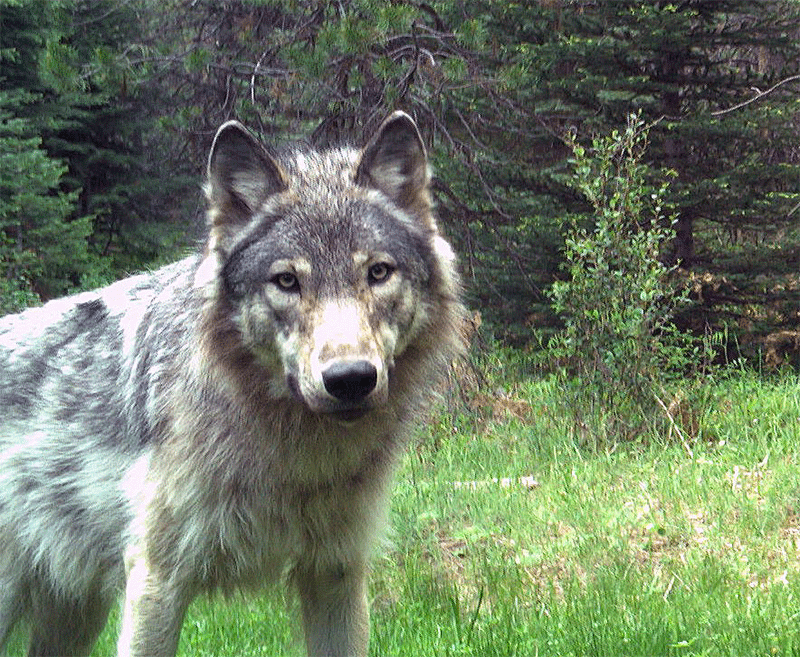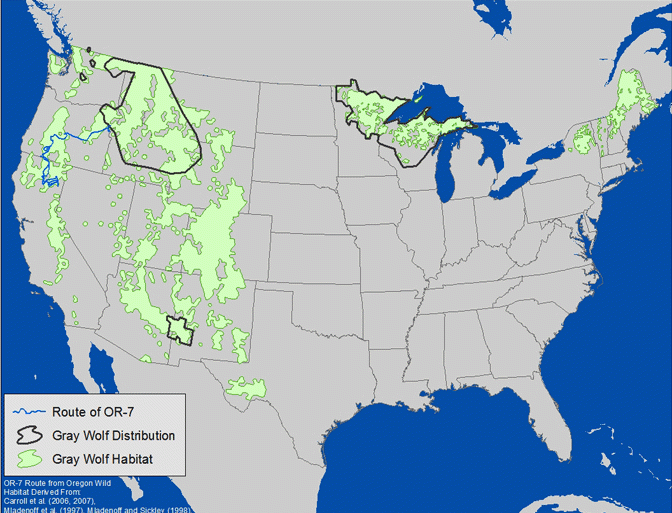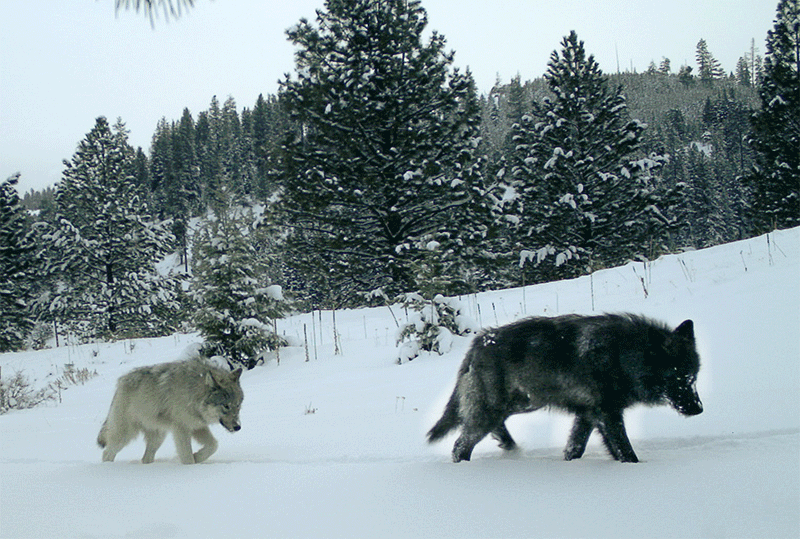Wolves that migrate into New York or are already in the state deserve greater protections
Protect the Adirondacks supports new legislation (S.7927/A.8295) in the State Senate and State Assembly sponsored by Senator Brad Hoylman-Sigal and Assembly Member Robert Carroll to enhance protections for wolves in New York State.
Wolves once roamed widely across New York State and have found their way back. Although wolves were extirpated from New York and other northeastern states by the early 1900s, wolves continue to thrive in the Canadian forests to our north and in Michigan, Minnesota and Wisconsin to our west. In addition, wolves have returned to, and established breeding populations in, Arizona, California, Idaho, Montana, New Mexico, North Carolina, Oregon, Washington, and Wyoming.
According to the U.S. Fish and Wildlife Service, wolves can disperse more than 1,000 miles from their natal territory. Studies have concluded that suitable wolf habitat exists in New York State and is well within the dispersal range of established wolf populations in the Great Lakes and Canada. Thus, the opportunity exists for wolve to naturally re-establish a breeding population in New York. Wolves have found their way into New York and need to better protected from intentional and unintentional killing.
Wolves are protected under federal and New York State law as an endangered species. However, because wolves and large Eastern coyotes are similar in appearance, wolves have been, and will continue to be, killed by hunters in New York despite their legal protections. As a result, we typically only have confirmation of a wolf in New York after it is dead.
Wolves and coyotes are both canids that have similar features (e.g., dog-like bodies with grey fur), but wolves are usually larger in size, are longer from snout to tail, and have a larger and blockier head and snout, and larger paws. Coyotes in New York, though generally larger than western coyotes, range in size from 30 to 40 pounds to more than 50 pounds in weight. Wolves are an important keystone species because they cull sick, dying and old individuals from populations of prey animals and the carcasses of their prey redistribute nutrients and provide food for other wildlife species.
The New York State Department of Environmental Conservation (DEC), the state agency responsible for protecting and managing New York’s wildlife, acknowledges that there have been at least two instances of wild wolves being killing in New York since 2001. In both of those situations, a hunter killed the wolf mistaking it for a coyote. DEC has been slow to take steps to protect wolves in New York and has done little to raise public awareness of the presence of wolves in the State. It took many months for the DEC to even admit that a wolf killed in central New York in December 2021 was a wild wolf. DEC can take more action to better educate hunters about wolves and their protected status, establish stricter coyote hunting regulations, and put into place wildlife management measures, such as reporting coyote kills to track numbers and locations of coyote killings.
New Legislation to Protect Wolves
The new legislation (S.7927/A.8295) will direct DEC to collect data about coyotes that have specified characteristics that are harvested by hunters and trappers in New York. These measures are designed to identify areas of the state where wolves may be present as well as gathering important genetic information on the coyote and wolf populations in the state. The legislation does not reduce the hunting season or decrease bag limits for hunters and trappers lawfully killing coyotes or other game animals in New York State.
Under the new legislation, every coyote harvested by a hunter or trapper in New York will be reported to DEC, similar to the game harvest reporting of deer, bear, and turkey, so that DEC will have details about the animals, how many are taken, and where they are located when they are taken. Coyotes that weigh greater than 50 pounds will be subjected to a DNA analysis by DEC to determine the genetic composition of the animal.
In the event that a harvested coyote weighing more than 50 pounds is determined after DNA analysis to actually be a wolf, DEC will be required to undertake an evaluation of whether there may be additional wolves in the area and whether it is necessary to impose a temporary moratorium on the killing of wild canids in a specific area in order to protect any wolves in the area. DEC will decide the length of time and the location of the moratorium.
The bill’s primary goal is to collect genetic data about large canids with specified characteristics that are harvested by hunters and trappers in New York. The bill requires that coyotes that weigh greater than 50 pounds will be subjected to a DNA analysis by DEC to determine the genetic composition of the animal. If the DNA analysis shows that the animal is a wolf, then DEC may impose a temporary moratorium on the killing of wild canids in a specific area in order to protect any wolves in the area. DEC will decide the length of time and the location of the moratorium. The data collected will help DEC to identify areas of the state where wolves are present and to gather information on coyote and wolf populations in the state. DEC will post on its website information about the DNA testing of wild canids, and any determinations of whether to impose a moratorium on the killing of wild canids. DEC will also be required to update its hunting and trapping educational materials to provide information about wolves, including the legal protections for wolves, the checking and tagging requirements for wild canids imposed by the new law, and how to distinguish a wolf from a coyote when a hunter or trapper is in the field. DEC will also be required to submit a report on the status of wolves in New York State. The legislation does not reduce the hunting season or decrease bag limits for hunters and trappers lawfully killing coyotes or other game animals in New York State.
DEC will be required to provide more information to the public. DEC will post on its website information about the DNA testing of wild canids, and any determinations of whether to impose a moratorium on the killing of wild canids. DEC will also be required to update its hunting and trapping educational materials to provide information about wolves, including the legal protections for wolves, the checking and tagging requirements for wild canids imposed by the new law, and how to distinguish a wolf from a coyote when a hunter or trapper is in the field.
By the end of 2025, DEC will also be required to submit a report on the status of wolves in New York State. The report will be based on field surveys, scat collection and analysis, howling surveys, DNA analysis, trail cameras and other research methods conducted by DEC.
If passed, the new legislation will provide improved protection to wolves in New York State, and it will develop sound scientific information for the DEC, the public and the legislature to guide policy and management into the future. Protect the Adirondacks urges the legislature to adopt this commonsense legislation to gather important genetic date on wild canids in the State, and to afford wolves a stronger chance to survive and re-establish themselves in their former home territory within New York State.
Click here to read a Memo of Support from Protect the Adirondacks.








